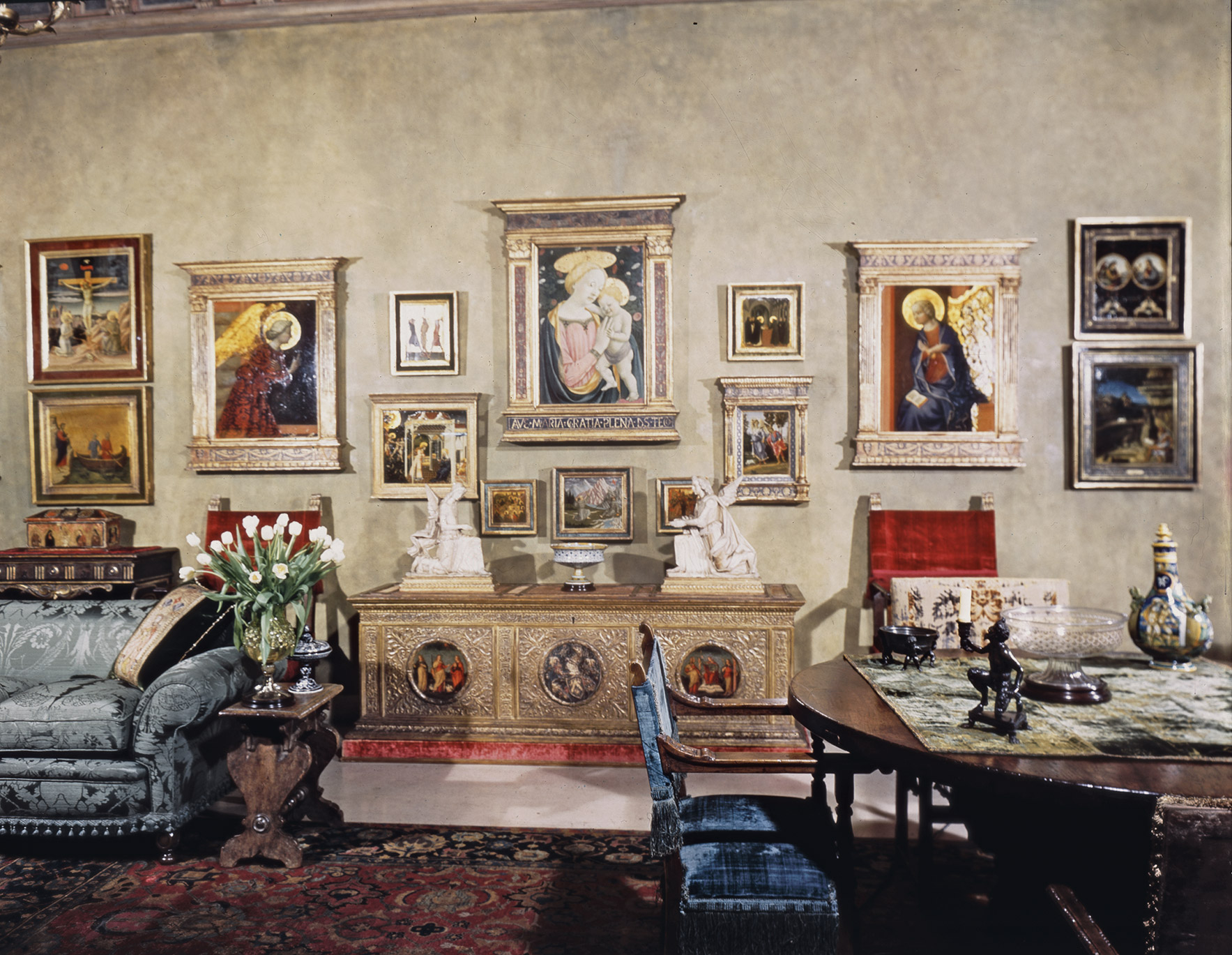The National Gallery of Art’s collection of Italian paintings is considered the most important in America and among the finest and most comprehensive in the world. To provide the most authoritative scholarship on the earliest paintings in the collection, the Gallery turned to one of the leading historians of early Italian art, Miklós Boskovits. Italian Paintings of the Thirteenth and Fourteenth Centuries is a fitting memorial to Miklós, who did not live to see the project to completion. Miklós shared responsibility for the previous volume, on the Gallery’s fifteenth-century Italian paintings, with David Alan Brown, curator of Italian painting at the Gallery, and others. Here he is the sole author of the catalog entries, while Laurence Kanter, chief curator for the Yale University Art Gallery, wrote the introduction.
Due to the Italian collection’s size, scope, and quality, the decision was made early on to divide the catalog into four volumes, corresponding to the standard art historical designations of medieval, early Renaissance, high and late Renaissance, and baroque and rococo. The first of these, published in 1996, deals with the later Italian pictures, those dating from the seventeenth and eighteenth centuries. The previous volume took up the fifteenth century. The present volume treats the medieval works of the thirteenth and fourteenth centuries.
The Italian panels discussed in this catalog are not nearly so numerous as those dating from the fifteenth century, and, though well known to specialists, are perhaps less familiar to the art-loving public than are the Gallery’s holdings of works by Leonardo, Botticelli, Raphael, or Titian. All the same, this part of the collection holds works by artists who were some of the most important Italian painters in all of art history —
Many of the paintings cataloged in this volume are small works painted for private devotion; others are fragments from multipaneled altarpieces. In many cases, the larger central panel of a dismantled polyptych has remained in Italy, while the other surviving elements are scattered in museums throughout Europe and America. An effort has been made, therefore, to suggest the original context for these works through schematic reconstructions, with photographs of the other panels making up the complex in question. Such reconstructions will help users of the catalog understand the panels’ original purpose and meaning. At the same time, these irregularly shaped fragments were often put into rectangular frames as if to suggest that they were small easel paintings. The Gallery’s formal, balanced hanging system has not altered this approach, though in some cases new frames approximating period frames have been substituted.
Many of these panels were also cut down, shaved in the back, and cradled to prevent movement, with the unfortunate result that much technical evidence about them has been lost. That said, careful examination in the Gallery’s Conservation Laboratory has produced a considerable amount of new technical information, such as the fact that
The present catalog is the first to offer a candid, thorough assessment of the condition of the Gallery’s earliest Italian paintings. The staff of the Gallery’s painting conservation and scientific research laboratories carried out systematic examinations and documented the results in formal technical reports. Professor Boskovits then used these reports as the basis for his remarks in the technical summaries that precede each entry. The technical summaries are therefore an integral part of the entries; they aim to inform the reader about the state of preservation of each painting, which affects any effort to determine its attribution or date.
Nearly all of the Gallery’s earliest Italian paintings belonged to two collectors whose holdings complemented each other. Andrew Mellon (1855 – 1937), the Pittsburgh industrialist and financier who served as U S Treasury Secretary, founded the Gallery in 1937 to rival the great national art collections in Europe. Not an adventurous collector, Mellon had conservative taste, running to Dutch and English portraits and landscapes. But the national gallery he envisaged for Washington had to have early Italian paintings to be representative, so in addition to masterpieces like Botticelli’s
The Nativity came from the front side of the predella, or base, of the Maestà, while the other Duccio panel in the Gallery’s collection,
Samuel Kress’s lifelong devotion to Italian — particularly early Italian — art may be seen best, perhaps, in his seventeen-room duplex apartment located at 1020 Fifth Avenue across from the Metropolitan Museum of Art in New York (see images below). Kress displayed his collection in pseudo-Renaissance interiors, where, in a setting of period furniture and decorative arts, marble and tile floors, carved chests and tables, and lead-glass windows, they were meant to evoke the world from which they came. Photographs of the Kress apartment, dating to the 1930s, feature Duccio’s predella panels, Giotto’s Madonna and Child, and Agnolo Gaddi’s




